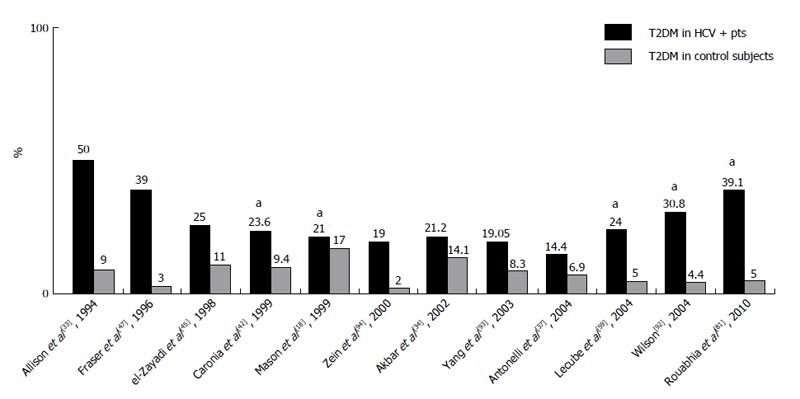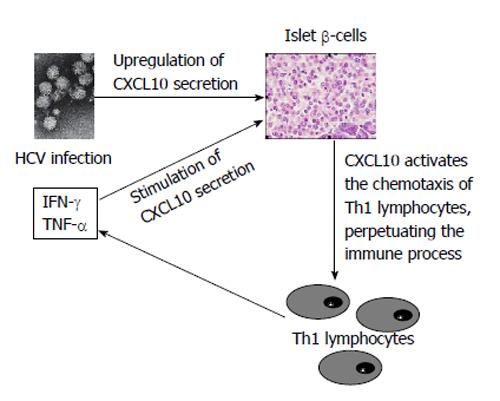Copyright
©2014 Baishideng Publishing Group Inc.
World J Diabetes. Oct 15, 2014; 5(5): 586-600
Published online Oct 15, 2014. doi: 10.4239/wjd.v5.i5.586
Published online Oct 15, 2014. doi: 10.4239/wjd.v5.i5.586
Figure 1 Patients seropositive for hepatitis C virus show a higher prevalence of diabetes mellitus than healthy controls.
Twelve representative epidemiological studies demonstrated a relationship between HCV infection and the development of type 2 diabetes mellitus (T2DM). Analyses have shown a higher prevalence of diabetes mellitus in patients who are seropositive for HCV than in controls. bP < 0.001, T2DM in HCV+ pts vs T2DM in control subjects. HCV+: Hepatitis C virus-infected; pts: Patients.
Figure 2 Potential regulation of the endocrine manifestations of hepatitis C virus infection in islet β-cells.
Hepatitis C virus (HCV) infection may act by upregulating CXC chemokine ligand (CXCL) 10 gene expression and the subsequent secretion of this chemokine by islet β-cells. These events lead to the recruitment of Th1 lymphocytes that secrete interferon (IFN)-γ and tumour necrosis factor (TNF)-α, which induce chemokine secretion by islet β-cells, thus perpetuating the immune cascade. This cascade may lead to the appearance of autoimmune thyroid disorders in genetically predisposed subjects.
- Citation: Antonelli A, Ferrari SM, Giuggioli D, Di Domenicantonio A, Ruffilli I, Corrado A, Fabiani S, Marchi S, Ferri C, Ferrannini E, Fallahi P. Hepatitis C virus infection and type 1 and type 2 diabetes mellitus. World J Diabetes 2014; 5(5): 586-600
- URL: https://www.wjgnet.com/1948-9358/full/v5/i5/586.htm
- DOI: https://dx.doi.org/10.4239/wjd.v5.i5.586










